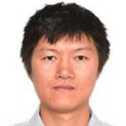Feature Papers of Micromachines in Physics 2022
A special issue of Micromachines (ISSN 2072-666X). This special issue belongs to the section "A:Physics".
Deadline for manuscript submissions: closed (31 December 2022) | Viewed by 25465
Special Issue Editors
Interests: micro/nanomedicine; microfluidics; diagnostics; biosensing; nanomaterials
Special Issues, Collections and Topics in MDPI journals
Interests: photonic crystal fibers devices; advanced optical fiber manufacturing technology; fiber-based optofluidics; fiber sensors; all-fiber devices and laser technology
Special Issues, Collections and Topics in MDPI journals
Special Issue Information
Dear Colleagues,
We are pleased to announce this Special Issue, entitled "Feature Papers of Micromachines in Physics 2022". Over the past several years, we have worked in conjunction with excellent scholars and research groups to publish several high-impact, high-quality manuscripts, which have received a large number of views and citations. Our goal is to publish the latest scientific and technological advances in areas related to the fundamentals and physics of micro/nanoscale multiphysics phenomena and devices (N/MEMS, mechanical and electrical transducers, sensors, actuators, optic devices, photonic devices, optoelectronic devices, micro/nanorobots and so on), in the hopes of providing great contributions to the scientific community.
This Special Issue will be a collection of high-quality papers from excellent scholars around the world, with both original research articles and comprehensive review papers being welcome, published with full open access after a peer-review, benefiting both authors and readers.
You are welcome to send short proposals for the submission of Feature Papers to our Editorial Office (micromachines@mdpi.com or dikies.zhang@mdpi.com) before the submission. The proposals will first be evaluated by Editors, and please note that selected full papers will still be subject to a thorough and rigorous peer-review.
We look forward to receiving your excellent work.
Dr. Yi Zhang
Prof. Dr. Limin Xiao
Guest Editors
Manuscript Submission Information
Manuscripts should be submitted online at www.mdpi.com by registering and logging in to this website. Once you are registered, click here to go to the submission form. Manuscripts can be submitted until the deadline. All submissions that pass pre-check are peer-reviewed. Accepted papers will be published continuously in the journal (as soon as accepted) and will be listed together on the special issue website. Research articles, review articles as well as short communications are invited. For planned papers, a title and short abstract (about 100 words) can be sent to the Editorial Office for announcement on this website.
Submitted manuscripts should not have been published previously, nor be under consideration for publication elsewhere (except conference proceedings papers). All manuscripts are thoroughly refereed through a single-blind peer-review process. A guide for authors and other relevant information for submission of manuscripts is available on the Instructions for Authors page. Micromachines is an international peer-reviewed open access monthly journal published by MDPI.
Please visit the Instructions for Authors page before submitting a manuscript. The Article Processing Charge (APC) for publication in this open access journal is 2600 CHF (Swiss Francs). Submitted papers should be well formatted and use good English. Authors may use MDPI's English editing service prior to publication or during author revisions.







